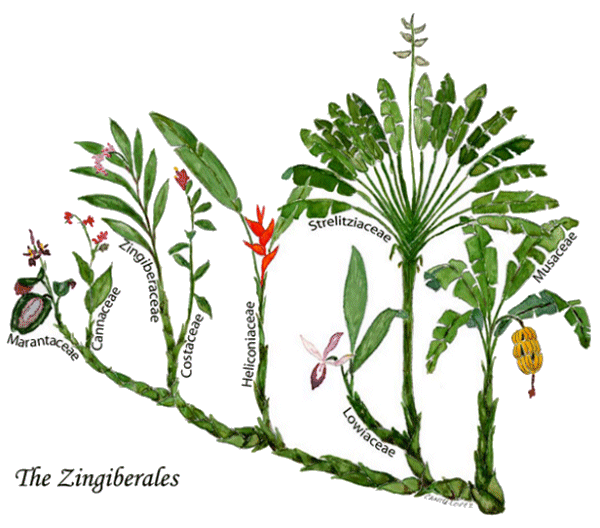 Heliconia are close relatives of gingers, bananas, birds-of-paradise and traveler's palms. There are approximately 350 species making up the single genus, with the bulk of them originating from Central and South America. Oddly enough, a small group of about 6 species have evolved separately in the South Pacific, and these are typically characterized by having green inflorescences. To learn more click on the image to the left and go to the Heliconia.org website. Be aware that you will need to use the "back" button on your browser to return to this site.
Heliconia are close relatives of gingers, bananas, birds-of-paradise and traveler's palms. There are approximately 350 species making up the single genus, with the bulk of them originating from Central and South America. Oddly enough, a small group of about 6 species have evolved separately in the South Pacific, and these are typically characterized by having green inflorescences. To learn more click on the image to the left and go to the Heliconia.org website. Be aware that you will need to use the "back" button on your browser to return to this site.
Heliconia, derived from the Greek word helikonios, is a genus of about 100 to 200 species of flowering plants native to the tropical Americas and the Pacific Ocean islands west to Indonesia. Heliconias (Order Zingiberales) are comprised of eight families, including ("Bird of Paradise" flower) and Muscea (banana). Most heliconias are polinated by hummingbirds. This accounts for their bright colors, which attract hummingbirds. Some heliconias are popular among horticulturists, but most species are too large and require a narrow range of environmental conditions to make good house plants. In their natural habitat, most heliconias prefer bright open spaces, such as gaps in the forest made by a fallen tree of along river edges. They grow up to about 10 feet tall, often in large stands (grouped together). Identifying a specific flower can be a challenge as many of the species are very similar to another. For that reason, I have identified the below flowers but they may not be accurate.
The Zingiberales family includes Cannaceae (Cannas), Costaceae (Spiral Gingers), Lowiaceae, Marantaceae, Musaceae (bananas), Strelitziaceae (Bird of Paradise), Sinfiveraceae (Gingers) and Heliconiaceae (Heliconias).

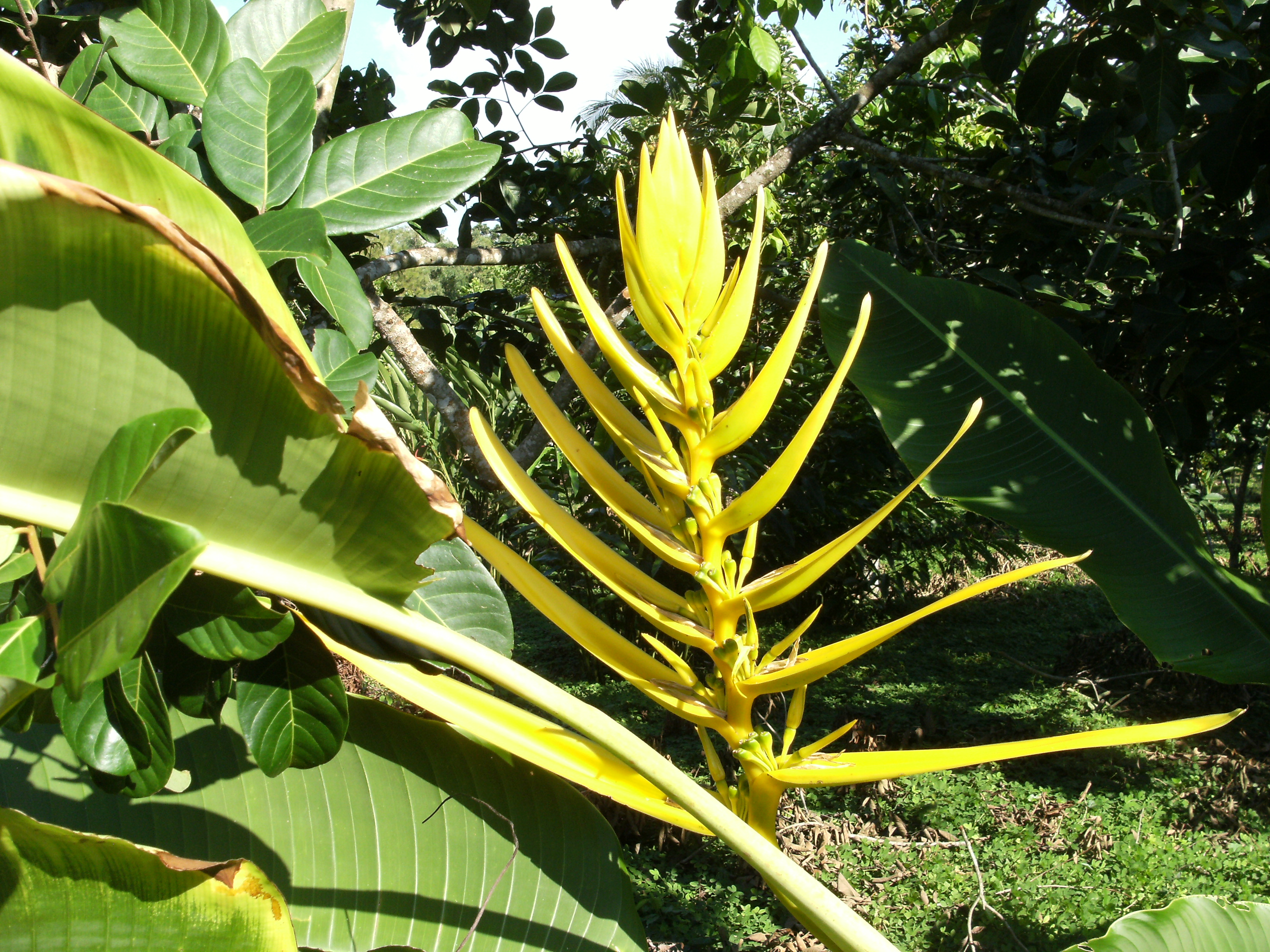
Heliconia lingulata
Common name is the "fan" this heliconia is not very common here. Since I first saw this in November, it reminded me of a Jewish Menora candle holder. Beautiful in any case. This shot was taken by Bob and Glennda Oliver during one of my tours to Frutas del Mundo.

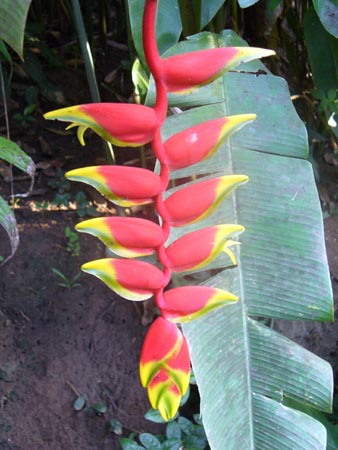
Heliconia Pendula
Well known as "Crabclaw" or Lobsterclaw"and common in the area. The spectacular inflorescence is the pendent. Successfully
reproduces from seed and tends to get established in near areas where it is being cultivated.

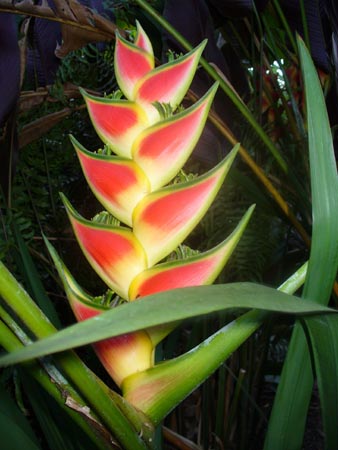
Heliconia Wagneriana
This is one of the under construction descriptions. I may or may not have more info on it but I just haven't gotten back to it.

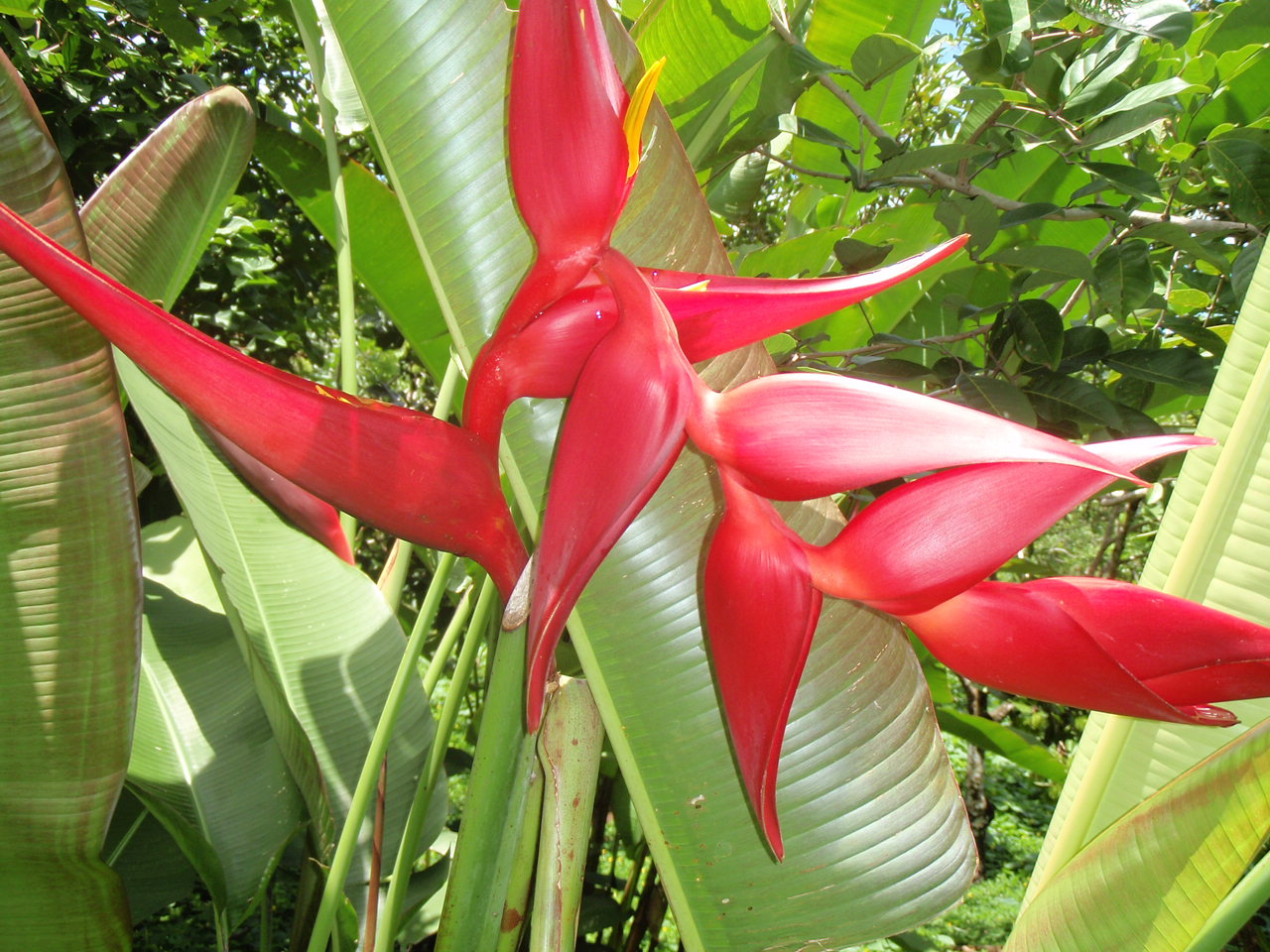
Heliconia Collinsiana x bourgeana
This heliconia cultivar named "Pedro Ortiz" (Hot Pink) is thought to be a natural hybrid between pendant Heliconia collinsiana and the erect Heliconia bourgaeana. Notice how its inflorescence neither points up nor hangs down but is formed in a somewhat twisted shape. This giant is stunning and grows 10 to 12 feet tall and blooms from August to October.

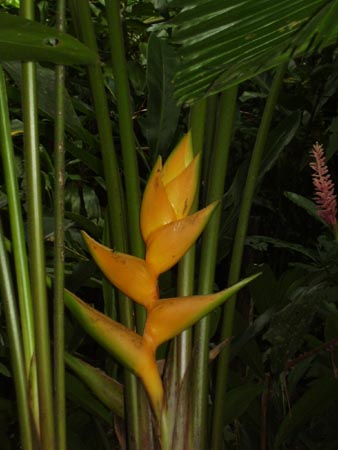
Heliconia champneiana
Better known as 'Maya Gold', after contacting a heliconia society, "Heliconia Society of Puerto Rico, Inc.", many of my questions have been answered.


Heliconia psittacorum x spathocircinata
(Golden Torch)
You will see varying shades of the bloom on this variety. I have seen them range from pink to orange on into bright red. These H. psittacorum hybrid, has the potential to become rather invasive. However, the golden yellow bracts are attractive, especially when planted en masse.


Musceae
(Musa ornata)
Plants grow to a height of 5 to 10 ft. The plants have green foliage with pink tones throughout. The leaves can grow to be 6 ft. long, 14 in. wide and can be used for tropical cut flower arrangements. It produces pink flowers and small, dark pink or crimson fruit. The fruit type is a banana that is seeded and inedible. M. ornata is an ornamental perennial plant that is usually grown for decorative purposes. It flowers readily and produces few but viable seeds. The male bud may be cooked or used in salads, while the leaves are often incorporated in making dressings. The root of the plant is also sometimes used for ayurvedic preparations (alternative medicine) in northeast India. The ash of the pseudostem, the corm, the fruiting stalk and fruit peel are also used as an anti-scorbutic (to prevent scurvy), as well as for digestive help, or as a tonic.

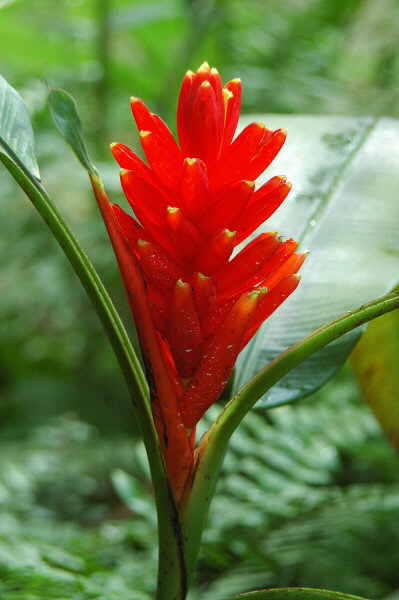
Musacoccinea
(Heliconia l_musacoccinea)
.

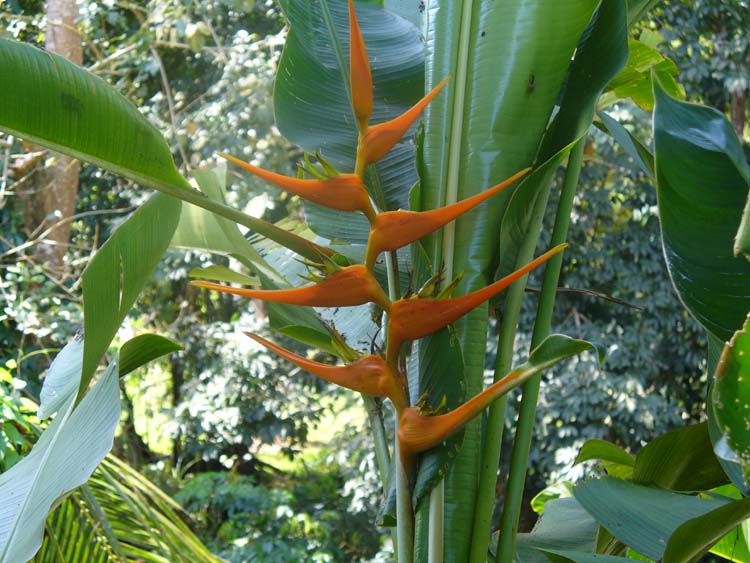
Guyana
It's possible that I'm wrong on this identification, but I found one similar to this on another site, so I'm guessing on the name of this one.


Banana
(Muscea)
All indications lead us to believe that bananas originated in Asia. Alexander the great is credited for bringing it to the Western hemisphere in the 16th century. Today there are over 500 documented names for different banana varieties, yet they are not all classified as individual species. Due to the banana plants' tendency to "sport" or mutate very easily, taxonomists gave up long ago trying to classify them all.
The seedless bananas, which are the varieties cultivated for food, reproduce by production of "suckers" or ratoons. These are shoots off of the main root or "corm" of the plant.
Click on the image for another variety blooming.











